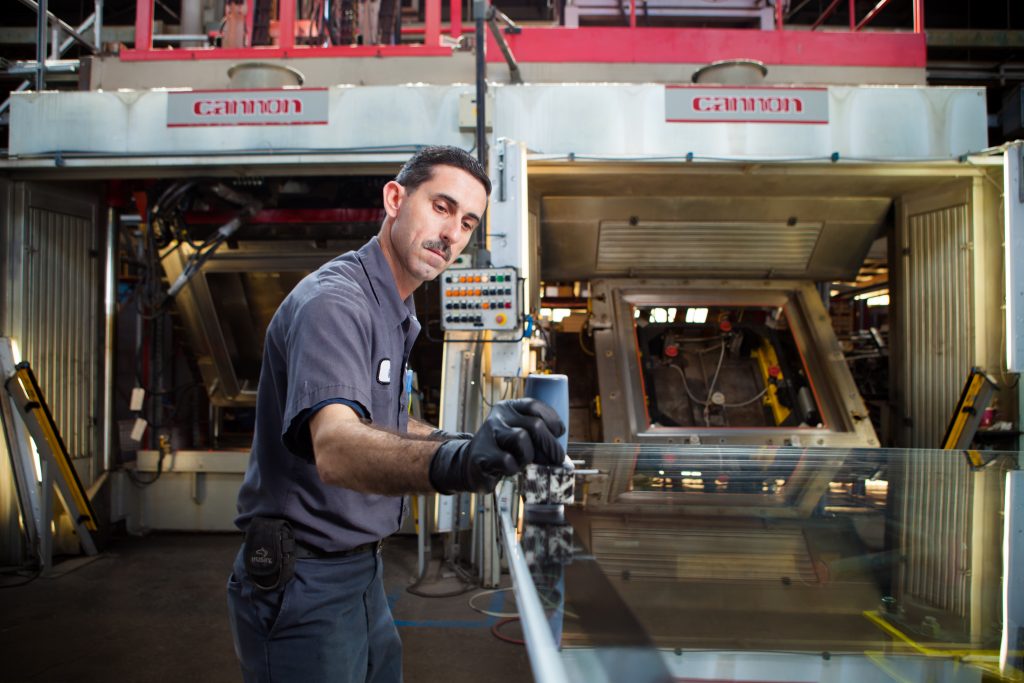
Skylights have been a staple of architecture for thousands of years, with some of the earliest known examples dating all the way back to the open-roofed domes of the Roman Empire.
Their utility and mindful use of space introduced a revolutionary mode of lighting which quickly inspired others across the globe to adopt and improve upon those early designs. From there key technological milestones—such as the boom of the glass industry during the mid-thousands and the mass-production capabilities introduced by the industrial revolution—all naturally influenced those designs until we ended up with what most people imagine when they hear the term “skylight” today:
Glass paneled fixtures assembled from a multifaceted range of components, usually involving metal or wooden frames that are held together with screw-fastenings, gaskets, and sealants. These models usually rely on plastic, plexiglass, or acrylic glass to effectively let light through, and have come to be recognized as the global standard for nearly a century.
But even with their popularity, these skylight designs presented hurdles left to overcome.
From weather wearing that’s common in the metals and woods used in their construction, to the security vulnerabilities that their traditional fastenings allow, to the simple fact that their panels are prone to leakage—it’s always remained clear that there’s been room for improvement, and that this familiar form of skylight would eventually fall into antiquity.
What’s Happening in Skylights Now
The breakthrough technologies and synthetically produced materials we’ve seen emerge in recent years have elevated the performance of skylights far beyond their previous limitations.
Thanks to innovations in processes like Reaction Injection Molding (RIM) there’s been a paradigm shift in the world of manufacturing, and a new era of natural interior lighting is the result.
First, What is Reaction Injection Molding?
RIM is an advanced engineering technique that’s most commonly seen across industrial sectors which require highly-durable materials in a variety of abstract shapes and sizes—such as the automotive industry.
The process works by injecting liquid polymers into specially designed molds that are heated and hardened into permanent thermoset solid-state resources—like polyurethane plastic. Polymers produced in this fashion are typically stronger, lighter, and longer lasting than other easily shapeable fabrication materials.
In other words, the freedom of RIM lets manufacturers customize everything they produce down to the precise weight, strength, density, and hardness they desire. With the ability to mold objects of any shape or size—and in high-grade materials that can stand up to a lifetime of work—the game-changing value of this process becomes obvious.
A Forward Revolution in Skylight Design
Modern RIM technology has prompted forward-thinking skylight manufacturers to take their designs to the next level.
Now solid-state skylights are being produced whole and from a dependable aliphatic polyurethane material, meaning units are installed all-at-once and in one piece—without any worries over fastening screws, securing assembly frames, or keeping track of other loose independent components.
Meanwhile, a variety of enhanced glazing’s (or types of glass) have been pioneered to provide a heightened range of protective options, such as hurricane proof, blast-resistant, general safety, and ballistic glass options. At the same time, configurable and modular adapters are produced as needed to create a perfect fit for all rooftops and openings, regardless of how unusual their size might be.
With RIM’s custom fits and resilient manufacturing materials, such advanced skylights:
- Require no additional maintenance after installation.
- Provide complete insulation without room for leakage—whether letting rainwater drip in, or internal air seeps out.
- Are damage resistant with bullet-proof grade protection to avoid unwanted entry, dents, cracks, and other forms of physical wear.
These advancements are rapidly overshadowing the performance of older skylight models still provide. In fact, due to the highly durable material and assured lasting performance of these new solid-state polymer-constructed skylights, incredible cost-savings-over-time opportunities and warranties for their use have begun to arise.

For instance, the 20-year transferable coverage that comes with our own skylights encompasses an amount of warranty time that would have been considered impossible for any provider to afford only a few years prior.
Transitioning to a Better Skylight Norm
We’ve come a long way from the open domed roofs of ancient civilizations to the radical technological manufacturing processes we’re seeing in skylights now.
Of course the applications described above are still relatively new, so despite the obvious advantages of today’s more recent innovative models, many organizations haven’t yet adjusted (or even been made aware of) the current shift in available skylight technology.
But with the higher performance that emerging skylights deliver on every end, the reduced manufacturing costs they offer, their easier installation, and the growing rate of new skylight implementations already taking place across commercial and residential sectors alike, it’s only a matter of time before the rest of the world embraces this growing standard for skylight potential.